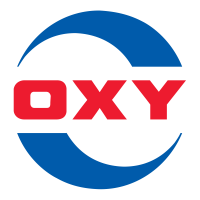
Hello Group Inc
NASDAQ:MOMO


| US |

|
Fubotv Inc
NYSE:FUBO
|
Media
|
| US |

|
Bank of America Corp
NYSE:BAC
|
Banking
|
| US |

|
Palantir Technologies Inc
NYSE:PLTR
|
Technology
|
| US |
C
|
C3.ai Inc
NYSE:AI
|
Technology
|
| US |

|
Uber Technologies Inc
NYSE:UBER
|
Road & Rail
|
| CN |

|
NIO Inc
NYSE:NIO
|
Automobiles
|
| US |

|
Fluor Corp
NYSE:FLR
|
Construction
|
| US |

|
Jacobs Engineering Group Inc
NYSE:J
|
Professional Services
|
| US |

|
TopBuild Corp
NYSE:BLD
|
Consumer products
|
| US |

|
Abbott Laboratories
NYSE:ABT
|
Health Care
|
| US |

|
Chevron Corp
NYSE:CVX
|
Energy
|
| US |

|
Occidental Petroleum Corp
NYSE:OXY
|
Energy
|
| US |

|
Matrix Service Co
NASDAQ:MTRX
|
Construction
|
| US |

|
Automatic Data Processing Inc
NASDAQ:ADP
|
Technology
|
| US |

|
Qualcomm Inc
NASDAQ:QCOM
|
Semiconductors
|
| US |

|
Ambarella Inc
NASDAQ:AMBA
|
Semiconductors
|
Utilize notes to systematically review your investment decisions. By reflecting on past outcomes, you can discern effective strategies and identify those that underperformed. This continuous feedback loop enables you to adapt and refine your approach, optimizing for future success.
Each note serves as a learning point, offering insights into your decision-making processes. Over time, you'll accumulate a personalized database of knowledge, enhancing your ability to make informed decisions quickly and effectively.
With a comprehensive record of your investment history at your fingertips, you can compare current opportunities against past experiences. This not only bolsters your confidence but also ensures that each decision is grounded in a well-documented rationale.
Do you really want to delete this note?
This action cannot be undone.

| 52 Week Range |
4.84
7.86
|
| Price Target |
|
We'll email you a reminder when the closing price reaches USD.
Choose the stock you wish to monitor with a price alert.

|
Fubotv Inc
NYSE:FUBO
|
US |

|
Bank of America Corp
NYSE:BAC
|
US |

|
Palantir Technologies Inc
NYSE:PLTR
|
US |
|
C
|
C3.ai Inc
NYSE:AI
|
US |

|
Uber Technologies Inc
NYSE:UBER
|
US |

|
NIO Inc
NYSE:NIO
|
CN |

|
Fluor Corp
NYSE:FLR
|
US |

|
Jacobs Engineering Group Inc
NYSE:J
|
US |

|
TopBuild Corp
NYSE:BLD
|
US |

|
Abbott Laboratories
NYSE:ABT
|
US |

|
Chevron Corp
NYSE:CVX
|
US |

|
Occidental Petroleum Corp
NYSE:OXY
|
US |

|
Matrix Service Co
NASDAQ:MTRX
|
US |

|
Automatic Data Processing Inc
NASDAQ:ADP
|
US |

|
Qualcomm Inc
NASDAQ:QCOM
|
US |

|
Ambarella Inc
NASDAQ:AMBA
|
US |
This alert will be permanently deleted.
 Hello Group Inc
Hello Group Inc






 You don't have any saved screeners yet
You don't have any saved screeners yet

Ladies and gentlemen, thank you for standing by, and welcome to the First Quarter 2024 Hello Group, Incorporated Earnings Conference Call. [Operator Instructions] Please note, this conference is being recorded today.I would now like to hand the conference over to your first speaker today, Ms. Ashley Jing.
Thank you, operator. Good morning and good evening, everyone. Thank you for joining us today for Hello Group's first quarter 2024 earnings conference call. The company's results were released earlier today and are available on the company's IR website. On the call today are Mr. Tang Yan, CEO of the company; Ms. Zhang Sichuan, COO of the company; and Ms. Peng Hui, CFO of the company. They will discuss the company's business operations and highlights as well as the financials and guidance. We will all be available to answer your questions during the Q&A session that follows.Before we begin, I would like to remind you that this call may contain forward-looking statements made under the safe harbor provision of the Private Securities Litigation Reform Act of 1995. Such statements are based on management's current expectations and current market and operating conditions and relate to events that involve known or unknown risks, uncertainties and other factors, all of which are difficult to predict and many of which are beyond the company's control, which may cause the company's actual results, performance or achievements to differ materially from those in the forward-looking statements. Further information regarding this and other risks, uncertainties and factors is included in the company's filings with the U.S. Securities and Exchange Commission. The company does not undertake any obligation to update any forward-looking statements as a result of new information, future events or otherwise, except as required under law.I will now pass the call over to our COO, Ms. Zhang Sichuan. Ms. Zhang, please.
Hello, everyone. Thank you for joining our call. Since the beginning of the year, we have made steady progress in implementing our strategic priorities across all business lines. I will now walk you through the details. I will start with a brief overview of our financial performance. For the first quarter of 2024, total Group revenue was RMB 2.56 billion, down 9% year-over-year and 17% sequentially and slightly exceeding the high end of our revenue guidance.Adjusted operating income was RMB 515 million, a slight decrease of 0.6% year-over-year and down 22% sequentially. Profit margin was 20.1%, up 1.8 percentage points year-over-year, but down 2 percentage points sequentially. The year-over-year margin improvement despite lower revenues was primarily due to our continued efforts to improve cost efficiency across all business lines, offsetting the revenue decline impact.Specifically, we drove continued efficiency improvements in personnel and cash utilization by reducing inefficient channel investments and optimizing staff allocation. As a result, costs declined more than revenues and the cost optimization initiatives drove margin improvement. The sequential decline in margin was primarily due to negative operating leverage resulting from the seasonal decline in revenue.Total revenue from the Momo app and standalone new apps was RMB 2.32 billion, down 8% year-over-year, mainly due to the decline in revenue from the Momo app, resulting from spending softness amid the weak macro economy and our proactive product and operational adjustments to maintain a healthy community ecosystem. Standalone new apps, especially overseas, continued to grow rapidly year-over-year. Adjusted operating income was RMB 487 million, down 3% year-over-year with a margin of 21%, up 1 percentage point from a year ago.For Tantan, total revenue decreased 22% year-over-year to RMB 241 million, mainly due to the decrease in the number of paying users. Our commercial product team continued to optimize the paying experience to improve ARPPU, which partially mitigated the revenue pressure. Tantan's adjusted operating income was RMB 28 million, up 92% year-over-year with a margin of 11.6%, up 6.9 percentage points from a year ago.Now I'll walk you through the progress we've made against our strategic priorities for Momo, Tantan and new endeavors since the beginning of the year. As I outlined on the Q4 2023 earnings call in March, the main goal for the Momo app this year is to maintain the productivity of this cash cow business with a healthy ecosystem. The Tantan's goal is to continue to improve the core dating experience and build an efficient business model that drives profitable growth. As for our new endeavors, our plan is to enrich the brand portfolios further, push the business boundaries beyond Momo and Tantan and build long-term growth engine.I will now walk you through the details of our execution. First, on the product and operational front of the Momo app. Since the beginning of the year, our product team has been focused on continuously enriching use cases and gamified features as well as strengthening Momo's social attributes. To help users improve their interactive experience, we applied AI technology to assisted chatting and image generation features. For example, AI Greeting provides chatting assistant services for users who want to make new friends from the Nearby People list. In other words, AI can suggest ice-breaking topics to users by analyzing the image and text information on the potential candidate's profile page. Data from the test group shows that this feature plays a positive role in increasing the greeting response rate.Another example is AI Magic Mirror or AI Morphing, an image-generation tool that allows users to synthesize photos with other users or landmarks, increasing users' social capital to provide new ways to interact. In addition, last year we piloted a Finding Partners or [indiscernible] program for our online to offline interest groups in a several major cities, which was well received by young users. The number of pan-outdoor activity groups, represented by City Walk, grew quite strongly in the first quarter. Product innovation and our ability to keep pace with the times in technology has enabled Momo, a mature social brand with a 13-year history to play an important role in helping users discover new relationships and build meaningful interactions. This has laid a solid foundation for Momo app to maintain user and revenue scale over the long-term.On the channel front, about a year ago, we shifted our focus from general user growth to ROI-oriented profitable user growth. This model is more pragmatic and better suited to Momo's current stage of development as well as the overall economic environment. We adjusted budget allocation for various channels according to the traffic at the beginning of the year, optimized potential channels, cut spending in channels and ads with poor ROI and explored new ways to bring incremental traffic, while further reducing user acquisition cost through collaboration with KOLs. We also focused on improving paying conversion, acquiring more high-paying users and improving our ability to better accommodate this group of people with the most suitable features on our Momo app.In the first quarter, the Momo app had 7.1 million paying users, a decrease of 300,000 from the previous quarter, mainly due to 2 reasons. First, our product and operational adjustments to reduce competition events resulted in a decline in paying users. Second, in order to improve profitability and pursue profitable growth, our channel team reduced investments in acquiring low-paying users with negative channel ROI, resulting in a decrease in long-tail paying users.Now let's talk about the productivity of our Momo cash cow business. In the first quarter, Momo's live streaming revenue was RMB 1.15 billion, down 11% year-over-year and 19% sequentially. The year-over-year decrease was mainly due to our strategy to proactively reduce revenue-oriented large-scale competition events in order to maintain a good social ecosystem and limit the unhealthy monetization approaches adopted by broadcasters and agencies to obtain competition event-related bonuses. Spending softness amid the weak macro economy was another reason for the year-over-year decrease in revenue. The sequential revenue decrease was due to Chinese New Year seasonality.On the product operation side, we fully leveraged Momo's social attributes to achieve the transition from revenue-oriented competition events to user-oriented content-focused operational activities. We managed to drive non-event-related, in other words, organic revenue growth by strengthening support for high-quality content and adding new gamified features. Cost savings from the reduction in operational activities during Chinese New Year resulted in a slight sequential decrease in the revenue sharing ratio.Revenue from value-added services, excluding Tantan, totaled RMB 1.15 billion for the first quarter, down 4% year-over-year and 9% sequentially. VAS revenue from the Momo app was RMB 806 million, down 17% year-over-year and 14% sequentially. Revenue from the standalone apps was RMB 343 million, up 52% year-over-year and 6% sequentially. The year-over-year decline in VAS revenue from the Momo app was mainly due to our proactive product and operational adjustments to mitigate regulatory risks as well as the spending softness amid the weak macro economy. The sequential decline was due to Chinese New Year seasonality.On the product front, user scale of the audio and video based VAS experiences gradually recovered after Chinese New Year, thanks to our efforts to drive the penetration rate. Our team made a smooth transition from competition events driven to non-event-focused operations by enriching interactive features and upgrading core gamified play. The steady increase in organic revenue partially offset the reduction in competition events. The Group's revenue for the quarter was slightly better than expected, mainly due to the smooth transition of the Momo app VAS business, which has strong social attributes. The overall revenue sharing ratio decreased slightly compared to the previous quarter due to seasonal cost savings.Now moving on to Tantan. First, regarding user trends and financial performance. As the cold wave at the beginning of the year and the Chinese New Year holiday reduced Tantan's user demand, our team reduced channel investments and our user base fell to a low point. In March, with the gradual easing of external unfavorable factors and the improvement in user experience brought about by continuous ecosystem improvement and recommendation strategy optimization, our user base and retention started to recover gradually.Tantan's MAU was 13.7 million in March, flat sequentially. As of the end of the first quarter, Tantan had 1.1 million paying users, down 100,000 sequentially, primarily due to the redesign of the auto-renewal page as required by the regulators. Our commercial product team has improved user propensity to pay by optimizing guidance on paying experience and highlighting differentiated member experiences, thereby mitigating the negative impact on paying users from the renewal page redesign.Turning to Tantan's financials. Total revenue for the first quarter was RMB 241 million, down 22% year-over-year and 11% sequentially. The year-over-year decrease was mainly due to reduced number of paying users. The increase in the revenue contribution of relatively high-end Black Gold and SVIP membership products drove overall ARPPU growth, partially mitigating the revenue pressure caused by reduction in paying users. The sequential revenue decline was mainly due to the change in auto-renewal policy as well as seasonality, which put pressure on paying users and ARPPU.In terms of business lines, VAS revenue was RMB 145 million, down 14% year-over-year and 10% sequentially, while live streaming revenue was RMB 87.7 million, down 37% year-over-year and 12% sequentially. The significant year-over-year decrease was mainly due to our ongoing operational strategy to de-emphasize live streaming. Tantan's adjusted operating income for the first quarter was RMB 28.8 million, nearly doubling year-over-year despite lower revenue and slightly up 4% sequentially. Profit growth was mainly driven by continued improvements in channel efficiency and personnel costs optimization.Now I'd like to walk you through the details of Tantan's progress on the channel and product fronts. First, on the channel front. Over the past 2 years, our user acquisition team has continuously cut inefficient channels and marketing approaches and further reduced marketing investments with negative ROI, laying a solid foundation for Tantan to achieve profitability despite revenue pressure. In the first quarter, thanks to the effective control of spamming activities and continuous improvement in ARPU over the past year, new user ROI meaningfully improved over the previous year.While our channel strategy optimization has yielded promising results over the past two years, the space for continuous optimization of unit acquisition cost is relatively limited. Meanwhile, a major problem facing Tantan's user growth model is relying too much on user acquisition through paid channels and too little on adding users organically through brand recognition. As a result, although the overall user acquisition cost has continued to decline over the past year or so, the reduction in overall average cost of new users was quite limited due to the continuous decline in the number of new organic users.To explore new growth models and more importantly to increase the portion of new users acquired outside paid channels, our user acquisition team plans to ramp up spending on KOL advertising, which is both ROI-focused and brand-oriented. Preliminary data in March showed that the popularity of the new users acquired through offline branding activities was higher than that of the overall average. We believe that improving brand image will contribute to sustainable and stable organic user growth over the long-term, thereby effectively reducing the overall user acquisition cost in the long run and helping to achieve a positive business cycle.Now moving to the Tantan's progress on product and operational side. To achieve our strategic goal of improving the core dating experience and building an efficient business model, our user product team focused on 2 things in the first quarter. First, we continued our anti-spam campaign with the updated strategy to enhance anti-spam capabilities to improve user experience. Second, we are working on an upgraded version to improve the dating experience. Our new version focuses on guiding users to enrich their personality by adding more information to their profile page, thereby increasing their reach and matching performance and improving the efficiency of matching and in-depth interaction thereafter.Meanwhile, in terms of UI design, we have slightly de-emphasized the swipe mode and encouraged users to scroll down and check out the details of each candidate. We started testing the new version at the end of April. We are currently iterating and emphasizing the version based on user feedback and gradually expanding the testing scale.In terms of monetization, we're adding the short-term VAS membership packages to lower the threshold for new paying users. In addition, we have built a paying model in the core swipe and match mechanism specifically for users without qualified photos to improve long-term retention and paying conversion of this group of users. We firmly believe that our efforts to continue to focus on product innovation and improving paying experience to drive ARPU growth is the only effective way for Tantan to achieve its strategic goal of profitable growth in the long-term.Lastly, in terms of our new endeavors. In the first quarter, total revenue of the new apps, including social and game products, was RMB 344 million, up 51% year-over-year and 5% sequentially. The year-over-year increase was mainly driven by the rapid growth in our overseas business. On a sequential basis, consumer sentiment in Arabic-speaking regions experienced a seasonal decline due to the impact of Ramadan. At the beginning of the year, our user acquisition team increased investments in overseas channels and enhanced collaboration with local KOLs, resulting in a significant year-over-year and sequential increase in the number of users and paying users.The launch of new gifting features and the rapid growth in the Turkish-speaking market led to a slight sequential increase in overseas revenue during the off-season, contributing important incremental revenue for the standalone new apps. At present, we are accelerating the localization process of our overseas business. On the product side, we are introducing more interactive gamified features in line with local user preferences and stepping up the testing of live streaming. On the operational side, we are improving customer experience and product experience specifically for high-paying users. At the same time, we are strengthening collaboration with local agencies and broadcasters to improve content quality.Undoubtedly, making rapid progress in multiple regions in the Middle East means that we will face more uncertainty and challenges built through the geo diversification. For example, the sharp depreciation of the Egyptian pound in March caused significant foreign exchange losses. In addition, as we gradually beef up our local operational teams and start entering new markets, we could put some pressure on the profits of our overseas business in the short-term. However, these upfront investments have laid the necessary foundation for future revenue and profit growth.This concludes my remarks. Now let me pass the call over to Cathy for the financial review. Cathy, please.
Thanks, Sic. Hello, everyone. Thank you for joining our conference call today.Now let me briefly take you through the financial review. Total revenue for the first quarter 2024 was RMB 2.56 billion, down 9% year-on-year and 15% quarter-on-quarter. Non-GAAP net income attributable to the company was RMB 59.9 million compared to RMB 471.9 million from the same period of 2023. In the first quarter, we accrued a withholding income tax of RMB 448.6 million associated with our historical undistributed earnings generated by our WFOE. I will elaborate a bit later on such accounting treatment.This tax expense item is on accrual basis. Meaning that it did not result in an actual cash outflow in that amount during the current quarter. In addition, it was one-off in nature and did not reflect the fundamental performance of the current quarter, nor is it indicative of future profit prospect. Excluding this special item, non-GAAP net income for the quarter would have been RMB 508.5 million, up 8% from the same quarter last year, but slightly down 1% sequentially. I'm glad to see that net income continued to grow on a year-over-year basis despite lower revenue. This was mainly attributable to our effective cost optimization and efficiency improvement initiatives.Now let me walk you through the details. Looking into the key revenue items for the quarter. Firstly, on live broadcasting, total revenue from live broadcasting business for the first quarter of 2024 was RMB 1.24 billion, down 13% year-over-year and 19% quarter-over-quarter. The year-over-year decrease was mainly due to 3 factors. #1, our proactive product and operational adjustments to de-emphasis revenue-oriented competition events for the sake of maintaining a healthy ecosystem. #2, soft consumer sentiment amid the weak macro economy. #3, Tantan strategically pivoting away from the less dating-centric live streaming service.The sequential decrease was due to CNY negative seasonality. Momo app live broadcasting revenue totaled RMB 1.15 billion for the quarter, down 11% year-over-year and 19% quarter-over-quarter. Tantan's live broadcasting revenue amounted to RMB 87.7 million, down 37% year-over-year and 12% quarter-on-quarter. Revenue from value-added services for the first quarter of 2024 was RMB 1.29 billion, down 5% from Q1 last year and 9% sequentially. Revenue from value-added service on an ex-Tantan basis was RMB 1.15 billion in the first quarter of 2024, down 4% from Q1 last year and 9% from the previous quarter.Momo app VAS revenue decreased both on a year-over-year and quarter-over-quarter basis. This was due to our proactive product adjustments to manage regulatory risks as well as a weak spending sentiment coupled with negative seasonality. On the other hand, revenue from the standalone new apps continued to grow steadily, partially offsetting the revenue pressure from Momo value-added service. Tantan's value-added service revenue amounted to RMB 145.1 million, down 14% year-over-year and 10% sequentially. The Y-o-Y decrease was due to a decline in paying users, which was in turn due to a reduction in channel investment, the anti-spam campaign and the adjustments to subscription renewal policy. The sequential decrease was due to the CNY seasonality, which had a negative impact on both paying users and ARPU.Now turning to cost and expenses. Non-GAAP cost of revenue for the first quarter of 2024 was RMB 1.50 billion compared to RMB 1.66 billion for the same period last year. Non-GAAP gross margin for the quarter was 41.4%, up 0.4 percentage points from the year ago period and 0.3 percentage point from last quarter. The increase was due to an improvement in Tantan's margin that resulted from a shift in its revenue mix.Non-GAAP R&D expenses for the first quarter was RMB 183.4 million compared to RMB 214.4 million for the same period last year or a 14% decrease year-over-year. The decrease was due to the continuous optimization in personnel and infrastructure costs. Non-GAAP R&D expenses as a percentage of revenue was 7% compared with 8% from the year ago period. We ended the quarter with 1,375 employees, of which 294 are from Tantan compared to 1,533 total employees, of which 374 from Tantan a year ago. The R&D personnel as a percentage of total employee for the Group was 62% compared with 63% Q1 last year.Non-GAAP sales and marketing expenses for the first quarter was RMB 287.3 million or 11% of total revenue compared to RMB 372.0 million or 13% of total revenue for the same period last year. The significant year-over-year decrease both in terms of absolute renminbi amount and as a percentage of revenue was primarily attributable to 2 reasons. One, in Q1 last year, we hosted an offline year end gala for Momo live streaming. #2, our strategy to trim inefficient channel marketing spend and focus on channel ROI. It's worth calling out that the offline annual gala for Momo live streaming is scheduled to happen in June 2024. Therefore, we expect the marketing costs in the second quarter this year to see a spike due to that event.Non-GAAP G&A expenses was RMB 93.5 million for the first quarter 2024 compared to RMB 88.4 million for the same quarter last year, representing a 4% and 3% of total revenue respectively. Non-GAAP operating income was RMB 515.0 million, a slight decrease of 0.6% from Q1 2023, down 22% from the previous quarter. Non-GAAP operating margin for the quarter was 20.1%, up 1.7 percentage points from the same period last year, but down 2.0 percentage points from the previous quarter.Non-GAAP OpEx as a percentage of total revenue was 22%, a decrease from 24% from Q1 2023, but up from 20% in Q4 last year. Non-GAAP operating expenses on a year-on-year basis decreased 16%. The decrease in both absolute renminbi amount and as a percentage of revenue for OpEx was mainly due to a reduction in sales and marketing expenses, and to a lesser degree, optimization in personnel costs. Non-GAAP operating expenses decreased 6% sequentially. This was attributable to the decrease in year-end bonus related as well as double pay.Now briefly on income tax expenses. Total income tax expense was RMB 557.6 million for the quarter. In Q1, the company repatriated RMB 2.0 billion from our WFOE in China to our offshore entity in order to replenish our U.S. dollar funding. As such repatriation already partly involved our historical undistributed earnings for prior years and since we might continue to distribute the WFOE's retained earnings to fund overseas business operations, shareholder return and potential investments, based on the principle of conservatism, in Q1, we accrued a withholding tax of RMB 448.6 million, which is 5% of the historical undistributed earnings of our WOFE.As said at the beginning of my remarks, this tax expense item is on accrual basis, meaning that it did not result in an actual cash outflow in that amount during the quarter. In addition, it was one-off in nature and did not reflect the fundamental performance of the current quarter, nor is it indicative of future profit prospects. Without the withholding tax, our estimated non-GAAP effective tax rate was around 15% in the first quarter.Now turning to balance sheet and cash flow items. As of March 31, 2024, Hello Group's cash, cash equivalents, short-term deposits, long-term deposits, short-term investments and restricted cash totaled RMB 15.12 billion compared to RMB 13.48 billion as of December 31, 2023. Net cash provided by operating activities in the first quarter of 2024 was RMB 400.2 million.Lastly on business outlook. We estimated our first quarter revenue to come in the range from RMB 2.65 billion to RMB 2.75 billion, representing a decrease of 15.5% to 12.4% year-on-year or an increase of 3.5% to 7.4% quarter-on-quarter. At segment level, for [ Q1 ] 2024, on a sequential basis, we expect Momo revenue to increase around mid-single-digit. On the Tantan side, we expect revenue to decrease mid-single-digit. Please be mindful that this forecast represents the company's current and preliminary view on the market and operational conditions which are subject to changes.That concluded our prepared portion of today's discussion. With that, let me turn the call back to Ashley to start Q&A. Ashley, please.
Thank you. Just a quick reminder before we take any questions. For those who can speak Chinese, please ask your questions in Chinese first and followed by a translation by yourself. Operator, please, we are ready for questions. Thank you.
[Operator Instructions] Your first question comes from Xueqing Zhang with CICC.
[Interpreted]My question is about Momo. Considering adjustment to macro environment, regulation and other reasons, what's your strategy for VAS in the future? Also, you mentioned in the prepared remarks, Momo reduced the competition events. Does it improve the revenue-sharing ratio of live streaming and VAS? And lastly, how to view the revenue and profit of the core Momo in 2024?
[Interpreted]Given the uncertainties in the macro environment in the end of last year, our team proactively reduced the revenue-oriented competition events in the live streaming and audio and video-based VAS experiences in order to protect user experience and limit the unhealthy monetization approaches adopted by broadcasters and agencies to obtain more revenue from competition events. The year-over-year revenue changes in the past 2 quarters reflected the impacts of this operational adjustments on the Momo app revenue.And since the beginning of the year, our team has introduced a new interactive gamified features and fostered the supply of high-quality content and leveraged Momo's strong social attribute to drive organic revenue growth, partially offsetting the decrease in competition events-related revenue. I'm very pleased with the team's ability to flexibly respond to changes in the external environment and make a smooth transition from competition events-driven to non-event-focused operations. This year, we plan to further pursue this strategy of fully leveraging Momo's core value proposition and develop more immersive interactive unified features in the audio and video-based experiences and explore incremental revenue opportunities.In terms of revenue sharing, our basic revenue sharing policy has remained stable over the past few years. Due to the reduction in competition events in the past 6 months, we have saved some bonus costs. However, the decrease in revenue caused by these operational adjustments has resulted in lower income for broadcasters and lower profits for agencies. As a result, we believe that it makes strategic sense to use a portion of the saved bonuses to increase the revenue sharing for non-event operations and to enhance agency engagement and motivation through moderate profit concession. And consequently, our overall revenue sharing ratio will remain basically stable compared to the previous period.And as for our revenue and profit guidance, I'll leave it to Cathy.
Okay. Before talking about the revenue outlook, I would like to remind the analysts and investors that the Momo segment revenue actually includes both the revenues from the core Momo application and the revenues from the new applications, including Social, Hertz and Duidui, et cetera. That's something you may want to bear in mind when taking our comments into your modeling.Now on the core Momo application, as in the past few quarters, future revenue trajectory will continue to hinge upon the development on 2 major fronts. One is macro and the other one is regulatory environment. For macro, which in turn dictates the consumer sentiment, we're seeing some positive policy changes at the top. However, how effectively and quickly those policy changes will get filtered down into the consumer behavior in general and more specifically into user spending on our platform, that at this point, it's -- I think it's still too early to tell. We'll see as the year progresses. So that's for macro.On the regulatory front, as investors can see, we have always been very disciplined and prudent in terms of managing risks and making sure our ecosystem is healthy and safe in the regulatory regard. In Q1, we undertook very important adjustments to the operational policy, as described by Sic and Tang in their remarks. The impact on the ecosystem is positive and the financial impacts so far are pretty in line with our earlier expectations, as communicated in last quarter's call. So that's the core business.The overseas piece will obviously continue to grow pretty robustly and thus help mitigate the decrease from the core. Overall, if you look at our Q2 guidance at midpoint, I think we are seeing 13% decrease on a year-over-year basis in Momo segment. That Y-o-Y decrease is higher than what we saw in Q1, mainly because Q2 2023, if you remember, that was the best quarter of that year, forming a higher base for Y-o-Y comparison. As we head into the second half, the Y-o-Y comparison should get a little bit easier. But overall, because the biggest impact factor, which is the operational adjustment, that adjustment was fully in the system by Q1. And the other 2 elements, the macro and regulatory risk, currently seem to be pretty stable. So if you put all these together, I would say, first half is a pretty good basis for us to think about the back half.With regards to profit, while we continue to try to optimize the cost structure for the core Momo business, we're also going to put a very significant portion of the savings from the core into building the new applications. And thus, we won't have as much room to cut on operating expenses in 2024 as in the past couple of years. This means, we're probably going to get some negative leverage from the decrease on top-line. Overall, for Momo segment, we'll try to hit a range between -- hit a range in the high-teens for the adjusted operating margin, but we won't pin ourselves down to that range.I guess, that's several points to address the question on top-line and bottom line outlook. Back to Ashley for next question.
Operator, next question, please?
Your next question comes from Raphael Chen with BOCI Research. Please go ahead.
[Interpreted]I will translate myself. I want to follow-up on overseas business. Could management share the basic strategy? Any updates on operational metrics or the localization progress? And lastly, could we have any quantitative outlook regarding the total revenue and the profit of our overseas business this year?
[Interpreted]I think Sic has covered this topic quite comprehensively in her prepared remarks earlier. At the beginning of the year, our business in the Middle East temporarily slowed down sequentially due to the restrictions on entertainment activities during Ramadan, but year-over-year it remained a rapid growth momentum. This was mainly because we have attached a great strategic importance to the overseas business in recent years and we have provided strong support to our overseas teams in terms of talent and capital allocation over the past years. On the last earnings call, I outlined 3 directions for overseas business growth; localization, new features and new regions.In terms of localization, we have set-up an office in the Middle East and this enables us to connect with and select local high-quality partners in a more efficient manner, therefore reducing communication and management costs. And in terms of products, we have engaged with high-paying users from different language and cultural backgrounds and optimized the product design and adjusted our practice based on user feedback and thereby improving user experience and boosting overall consumer sentiment.In addition to upgrading the existing voice-based gamified play, we also ramped up testing of live streaming by increasing its penetration. In terms of new market expansion, we have begun to gradually increase investment in richer countries in the Gulf region. And we expect our products and operations in the Middle East to improve significantly this year compared to last year and laying a solid foundation for continued growth in this region.As for financial-related matters, I will leave it to Cathy.
Okay. For revenue outlook for the overseas piece, in Q1, Soulchill grew I think over 60% year-over-year. Moving deeper into the year, the Y-o-Y growth may slowdown a little bit due to the higher comp last year. If we can move faster in implementing our product and operational strategies, the slowdown could be mitigated to a large extent. If some of the growth initiatives takes time to bear fruit, then the slowdown could be more evident. We'll get more clarity as we head into the second half. Profit wise, there is still going to be pretty impressive Y-o-Y growth. But as we are still seeing many growth opportunities in the region, we'll try to strike a balance between profit growth and investment in the future -- investment for the future.Back to Ashley.
Operator, in the interest of time, let's take our one last question.
Your last question is from Henry Sun with JPMorgan.
[Interpreted]I'll translate myself. I have a few questions about Tantan. Management mentioned in the prepared remarks an improvement in Tantan's acquisition efficiency. Does that mean we should expect an increase in marketing spend moving forward? And how much are we planning to invest in a brand marketing initiative? Does the change in strategy suggest that user numbers have bottomed out? And lastly, could management share your perspective on the user trends as well as the revenue and profit outlook this year?
[Interpreted]Our continuous cost reduction and efficiency improvement strategies over the past 2 years have effectively brought Tantan to stable profitability. However, the continued reduction in channel investment has also put significant pressure on Tantan's user base. And we see that Tantan's users and revenue have not stabilized. And given the new user ARPU has improved significantly over the past year leading to an improvement in new user ROI, we plan to moderately increase our channel investment in the second quarter, while maintaining the current ROI in order to stabilize the user base.In addition, we haven't invested in Tantan's brand marketing since 2019, which is one of the key reasons for the continuous decline in organic new users in the recent years. Therefore, based on our successful test in March, we plan to adopt more offline marketing strategies to raise brand awareness, improve brand image and user trust to drive download conversions and organic user growth.In terms of monetization, Sic just mentioned that we are working on an upgraded version of Tantan. The new UI design will guide users to enrich their personal information and encourage users to spend more time learning about a candidate before deciding to swipe left or right. We had much debate internally about this design change because it involves changing a long-standing user behavior based on which many of our premium features are built. Thus such change in UI will likely to have a negative impact on monetization.However, we eventually concluded that this is the right course of action for long-term improvement in user experience and was a sacrifice in short-term monetization. Of course, our commercial product team will continue to optimize paying experience to improve new user ARPU to partially offset the negative impact of regulatory changes on membership renewal policy and product upgrade.And as for the financial part, I will leave that to Cathy, please.
Sure. I think there are several questions here. On the marketing spend, although the ARPU of Tantan has significantly improved during the past year, we have not reached the tipping point where the return on investment is high enough to drive a positive business cycle yet. That means, if we pull the marketing spend too high, we could flip back to loss. So the plan for the coming couple of quarters is to moderately increase the marketing spend. By moderately, I mean ballpark probably between RMB 10 million to RMB 20 million incrementally per quarter. And most of that incremental spending will go into KOL marketing. At the same time, we will carefully monitor the ROI to make sure we get good return for the marketing investment.The goal for the Tantan team this year -- here I'm answering the question about the user plan. The goal for Tantan team this year is to keep the user base stable through effective marketing campaigns as well as product innovations to deliver better dating experiences. Whether we will be able to reach that target will depend on how efficient our product and marketing teams are. Revenue wise, we are likely still going to see a downtick as live streaming continue to shrink, but there is quite limited impact on profit because gross margin for live streaming is very, very low for Tantan's live broadcasting business. However, as we are investing part of the profit back to brand marketing, the bottom line will -- the bottom-line this year will likely decrease from last year's level. So hopefully, that addresses your question.Ashley? I'll pass to Ashley for closing.
Thank you. And actually that's it for today. And thank you for participating, and we'll see you guys next quarter. Thank you, operator. We're ready to close.
Thank you. That does conclude our conference for today. Thank you for participating. You may now disconnect.[Portions of this transcript that are marked [Interpreted] were spoken by an interpreter present on the live call.]